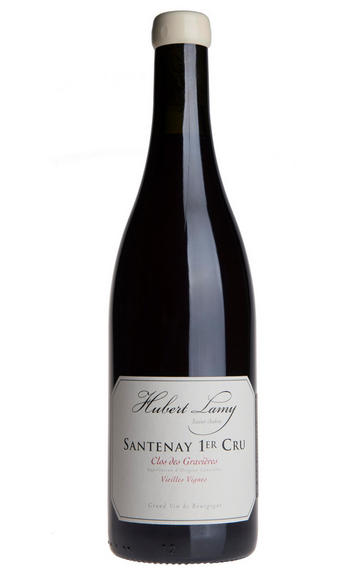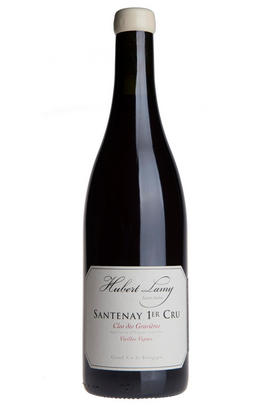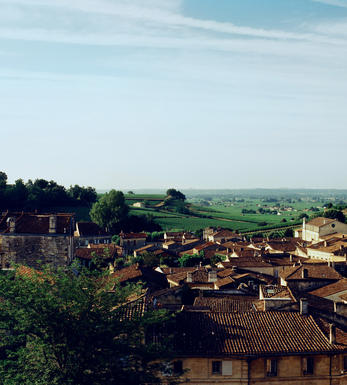
2016 Santenay Rouge, Clos des Gravières, 1er Cru, Domaine Hubert Lamy, Burgundy

Critics reviews
Neal Martin - 29/12/2017
About this WINE

Domaine Hubert Lamy
There have been Lamys growing vines in St-Aubin since 1640 - today it is run by Olivier Lamy. Olivier is representative of a new breed of Burgundian grower keen to progress. He worked at Méo-Camuzet before taking over in 1996 from father Hubert. Olivier ceased supplying négociants in 1997, grubbing up and selling off peripheral vines, keeping only the best and oldest sites. Currently he is experimenting with different planting densities in a quest to capture even greater expression of terroir.
The domaine produces both reds and whites and now has 16.5 hectares of vineyards, mostly in St-Aubin but a few parcels in Chassagne-Montrachet and a tiny plot in the Grand Cru Criots-Bâtard-Montrachet. Yields are kept low and a recent innovation has been the introduction of selection tables in the cuverie to ensure that only the healthiest and ripest grapes are used.
Vinification is traditional and the wines are matured in oak casks (20-30% new) for 12 months before minimal filtration and then bottling. The quality is very high and is often superior to many wines from more fashionable villages that sell at twice the price.

Santenay
Santenay, situated in the southern part of the Côte de Beaune in Burgundy, France, is known for producing some of the world’s most prestigious and sought-after wines. The terroir of Santenay is diverse, featuring limestone and clay soils, which play a crucial role in shaping the unique character and flavours of the wines.
The region’s winemaking heritage dates back centuries, with a deep-rooted tradition of crafting exceptional Pinot Noir and Chardonnay wines. The village’s vineyards benefit from a favourable microclimate that promotes grape ripening while retaining freshness and balance in the wines.
The red wines often exhibit a harmonious blend of red fruit flavours, such as cherry and raspberry, and subtle earthy and spice undertones. The tannins in these wines are typically refined and well-integrated, contributing to their elegance and age-worthiness.
On the other hand, Santenay’s white wines are characterised by their bright acidity, offering refreshing citrus and orchard fruit notes with a hint of minerality.
Winemakers in Santenay take pride in following a traditional and artisanal approach to winemaking, emphasising the importance of respecting the land and expressing the unique terroir in each bottle. They aim to capture the essence of the vineyards and the nuances of the grape varieties, resulting in authentic wines that reflect their origin.
Santenay’s picturesque landscapes and dedication to producing high-quality wines attract wine enthusiasts and connoisseurs worldwide. It is a region where history, tradition, and innovation intersect, making it a compelling destination for anyone seeking to explore Burgundy’s exceptional wines and winemaking culture.

Pinot Noir
Pinot Noir is probably the most frustrating, and at times infuriating, wine grape in the world. However when it is successful, it can produce some of the most sublime wines known to man. This thin-skinned grape which grows in small, tight bunches performs well on well-drained, deepish limestone based subsoils as are found on Burgundy's Côte d'Or.
Pinot Noir is more susceptible than other varieties to over cropping - concentration and varietal character disappear rapidly if yields are excessive and yields as little as 25hl/ha are the norm for some climats of the Côte d`Or.
Because of the thinness of the skins, Pinot Noir wines are lighter in colour, body and tannins. However the best wines have grip, complexity and an intensity of fruit seldom found in wine from other grapes. Young Pinot Noir can smell almost sweet, redolent with freshly crushed raspberries, cherries and redcurrants. When mature, the best wines develop a sensuous, silky mouth feel with the fruit flavours deepening and gamey "sous-bois" nuances emerging.
The best examples are still found in Burgundy, although Pinot Noir`s key role in Champagne should not be forgotten. It is grown throughout the world with notable success in the Carneros and Russian River Valley districts of California, and the Martinborough and Central Otago regions of New Zealand.


Buying options
Add to wishlist
Description
Here there is gravel over limestone and some new oak (30 percent) has been permitted. There is a beautiful lightness of touch, none of the slightly firm, earthy character that can appear in red Santenay. The finish is surprisingly lush and the tannins suave. Drink 2021-2026.
Adam Bruntlett, Burgundy Buyer
There have been Lamys growing vines in St Aubin since 1640 – today the domaine is run by Olivier Lamy in succession to his father Hubert. Olivier ceased supplying négociants in 1997, grubbing up and selling off peripheral vines, keeping only the best and oldest sites. He has been experimenting with different planting densities in a quest to capture an even greater expression of terroir. Every single one of Olivier Lamy’s vineyards in St Aubin was completely frosted; only Santenay escaped. In a strange way, this was a benefit because, when the vines began to re-flower, they did so all at the same time and there was an homogeneity of growth and maturity. Furthermore, without two differently maturing sets of grapes to contend with, the crop made up the two-week delay imposed by the frost and Olivier was able to start harvesting in Santenay on 15th September, finishing his Bourgogne Blanc from his highest vineyards in St Aubin 10 days later. Olivier suggests the style is like a lighter version of 2014. Overall his production is down about one third.
wine at a glance
Delivery and quality guarantee